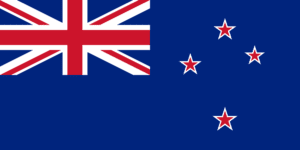I’m sure you’re all familiar with playing cards.
It’s a specially made card stock that often has symbols and numbers in black and red color, and on their back, they all have some kind of design or logos but all of them need to be similar.
PlayOJO Casino
- All wins and bonuses paid in CASH with no restrictions
- Deposit $10 get 80 Wager Free Spins
- Popular in New Zealand
Well, the card symbols that are placed on the card’s front are called ‘suits’ as well.
The suits can be in black and red color and there are 4 of them; heart, diamond, clubs, and spades.

A card deck that has these symbols is called a French card deck because of its specific symbols and of the card number as well.
There are 52 cards in one deck, along with Jack, Queen, and King.
History of the suits
The suits and in general, the cards alone were invented in China where they were some kind of trick cards.
Soon enough, the card mania was so popular that it spread in Central Asia and in the Middle East.
The decks were called Kanjifa and there was nothing similar to the cards that we know today.
Also, their suits were coins, swords, cups, and clubs.
There weren’t any drawings of humans on the cards such as we have today (Jack, Queen, King).
Before there were official French card decks, the Latin card deck had an extra suit in their deck and that’s why the Germans decided to remove one of the suits so they can be a tad bit different than the Latins.
Because of this, the Latin card deck was divided into Spanish, Italian and French deck and that’s how each deck started to create their own symbols and suits so they can be different than the others.

History of the Card Drawings
Even though no one is quite sure about how the idea for drawing royalty members came up, we can say that at some point, every kind of card deck started having it.
The most similar past drawings to the ones that we have today are the English ones, with details like flower clothing, crowns, beards, and the queens holding a flower.
But, the most fascinating thing here was that the cards were all painted by hand.
In the French version, there were flowy robes and similar postures of the figures standing with serious face grimace. The clothing was suitable for the 15th century.

The real game-changer was in Germany when the people were printing the playing cards by engraving the figures into the wood and producing them.
They got this idea because, with the same technique, they used to make icons and holy grails as well, importing them to Western Europe.
The Spanish deck was the most unusual of them all. The deck had only 40 cards (the standard deck has 52) and there were no queens, no 10s, 9s and 8s and instead of Jack, there was a seated royal servant riding a horse (some of the people referred to him as ‘prince’).

Even though it spread west and north, this deck didn’t popularise as much.
We can mention the Americans last because they did nothing in particular for the card history except for the innovation of Joker.
Their decks and drawings were the same and they started playing cards in the 19th century.
These are only a few important details of the whole card history.
There were a lot of variations and changes that were updated once in a while, but after all, you still can find some people mastering the other Latin card decks and playing them.
It’s so wonderful and I can’t wait to see what the future holds for the cards.
Read More Content From Top Kiwi Casinos:
Beginners Guide: The Most Famous Casino Games Explained
The Best Cities for Online Casino Lovers
Table of Contents


